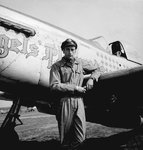ccheese
Member In Perpetuity
I've heard of stories of an American or a British pilot who was captured, put in a POW camp, and later
escaped by stealing a German aircraft and flying it back to England.
Does anyone have any reading material on true stories of such an event ?
As I recall, most German warbirds had inertia starters, and stealing of of these would be very difficult.
The aircraft would have to be running and unattended for someone to steal it.
Info, with references would be appreciated.
Charles
escaped by stealing a German aircraft and flying it back to England.
Does anyone have any reading material on true stories of such an event ?
As I recall, most German warbirds had inertia starters, and stealing of of these would be very difficult.
The aircraft would have to be running and unattended for someone to steal it.
Info, with references would be appreciated.
Charles


